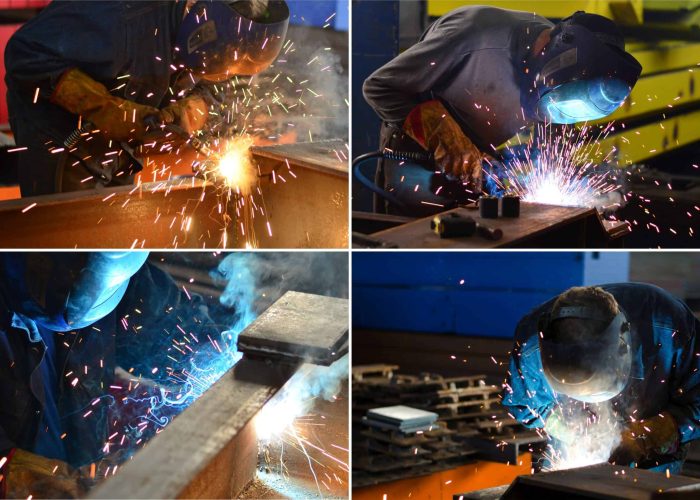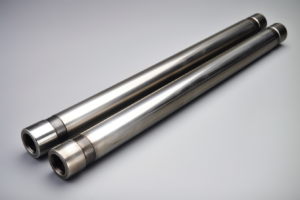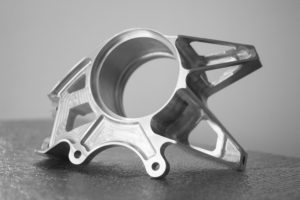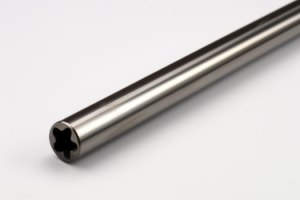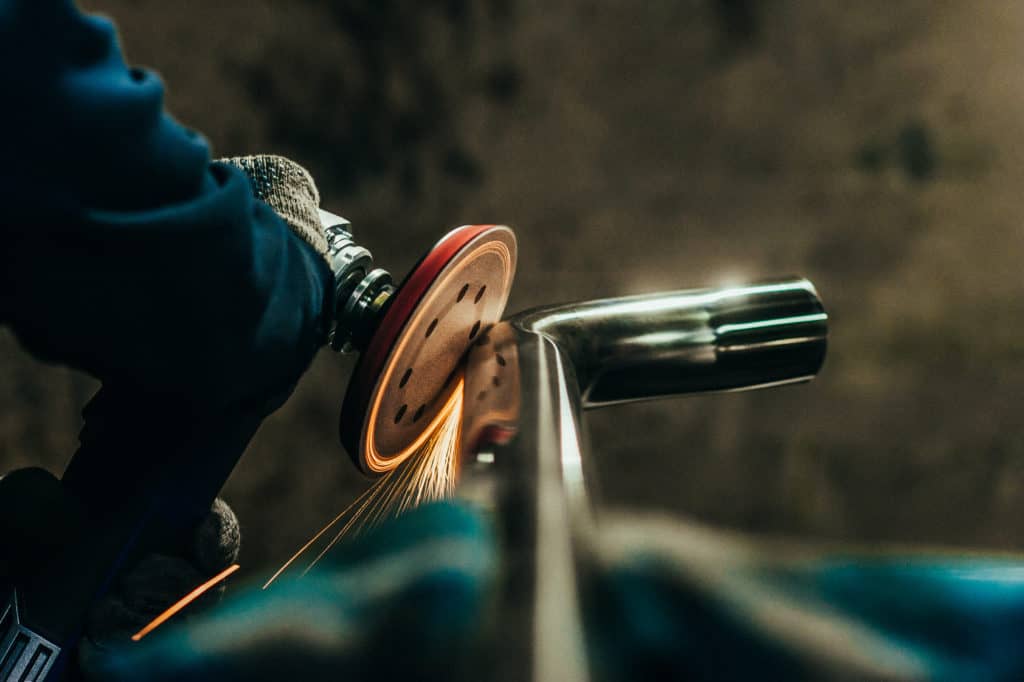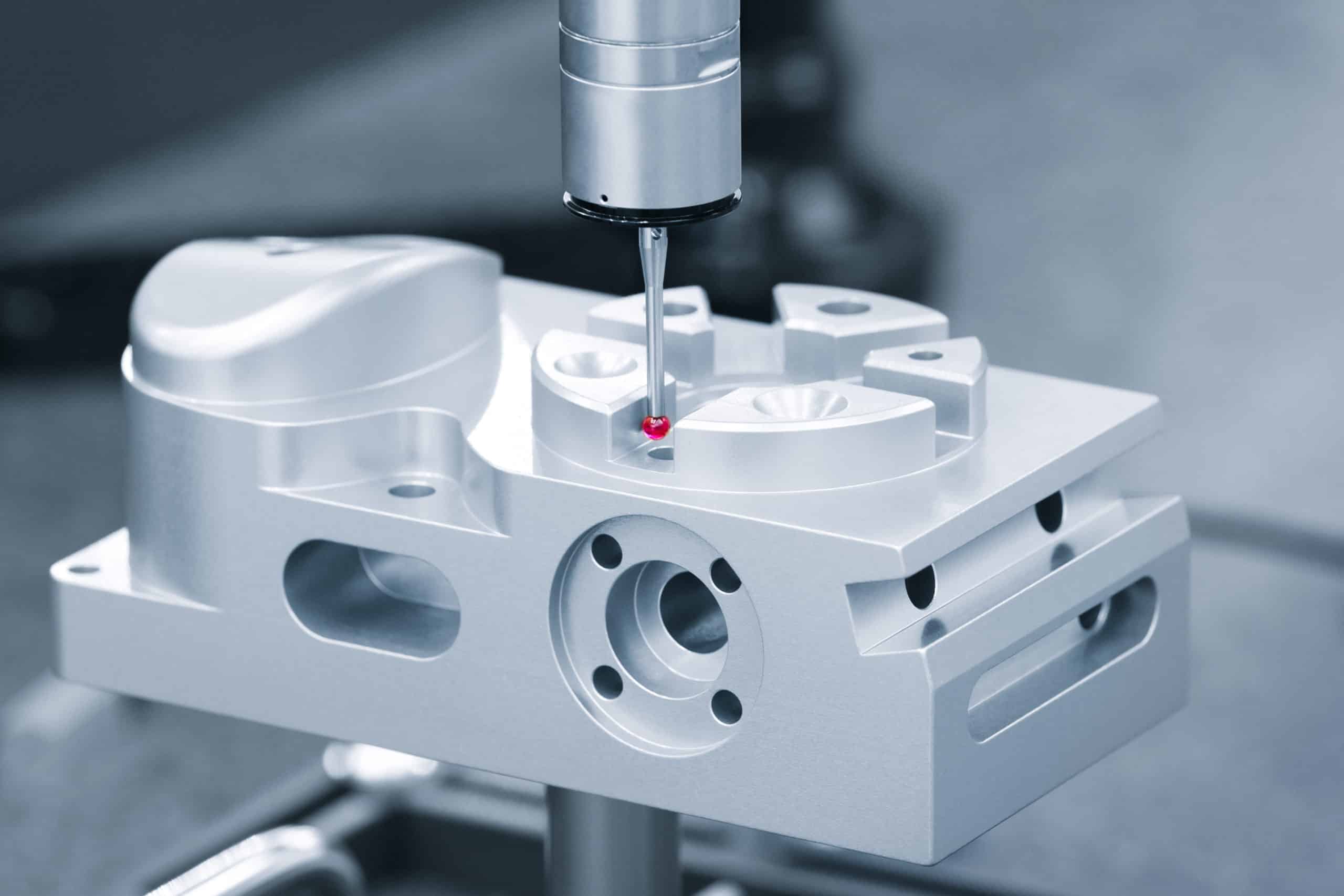Choosing the wrong fabrication method can turn a simple bracket into a $200 nightmare. After manufacturing precision sheet metal parts for aerospace, medical, and industrial clients, small process decisions often determine whether your part costs $20 or $200 each.
The best fabrication method is decided by material thickness, tolerance requirements, and production volume. Laser cutting works well for complex shapes under 6mm thick, while punching excels for high-volume hole patterns in thinner gauges. Bending offers excellent strength without joints, but welding may be necessary for complex assemblies.
Learn to match your design to the right process, avoid cost-driving mistakes, and get tolerance and material tips from real production experience.
Table of Contents
Which fabrication methods require secondary operations?
Laser cutting, welding, and punching typically require secondary operations like deburring and edge finishing, while waterjet cutting produces clean edges that often eliminate these extra steps. Choose your fabrication method based on whether you can absorb secondary operation costs or need to avoid them entirely.
Quick Decision Matrix:
- Lowest total cost → Punching + light deburring ($2-5/part)
- Fastest delivery → Laser cutting (accept standard burrs)
- No secondary ops → Waterjet cutting (clean edges)
- High volume → Punching with automated deburring
Laser cutting creates heat-affected zones and sharp burrs on both edges and holes, especially on stainless steel and aluminum over 2mm thick. Deburring typically involves 10-30 minutes of hand filing or tumbling per part, adding $8-20 to your cost. Red flag: If your part has over 10 linear feet of cut edges, waterjet’s clean cutting often costs less than laser plus deburring. Punched holes always create exit-side burrs but need only 2-5 minutes of light hand filing unless you’re punching materials over 3mm thick. Holes smaller than 6mm are difficult to deburr manually and may require tumbling or specialized tools.
When secondary ops are mandatory vs. optional: Medical devices and food contact parts require complete deburring for safety. Powder coating or anodizing can mask minor laser burrs on non-critical edges. Assembly interfaces need deburring when burr height exceeds 0.2mm and causes interference. Internal brackets often accept standard laser finish without issues.
How to specify on drawings: Write “break all sharp edges 0.1mm max” when deburring is required, or note “standard laser finish acceptable” to avoid extra costs. For critical assembly surfaces, specify “burr-free” or “Ra ≤ 1.6 μm.”
Design Takeaway: Plan secondary operations into your timeline and budget early. Choose waterjet when deburring costs exceed the process premium, typically on thick materials or parts with extensive cut perimeters.
What material thickness works best for laser cutting vs waterjet?
Laser cutting works best on materials under 25mm thick, while waterjet handles up to 200mm with consistent quality. For most sheet metal applications, laser cutting excels from 0.5mm to 12mm thickness, offering faster speeds and lower costs.
Thickness Decision Guide:
- 0.5-6mm → Laser cutting (fastest, most economical)
- 6-25mm → Laser cutting possible, but consider waterjet for tight tolerances
- 25-50mm → Waterjet cutting (laser quality degrades significantly)
- 50mm+ → Waterjet only
Cost differences become dramatic as thickness increases. We charge $0.50 per linear foot for 3mm aluminum laser cutting, but 12mm aluminum jumps to $2.50 per foot with 2-3 day lead time versus same-day delivery for thin materials. Critical issue: Laser cutting above 12mm produces beveled edges up to 2-3 degrees, meaning your mounting bracket won’t sit flat and you’ll see light gaps at corners.
Material behavior varies significantly with thickness. Stainless steel becomes expensive above 15mm due to slow speeds and heat cleanup. Aluminum works economically up to 12mm, while carbon steel maintains good laser performance up to 20mm. When your assembly requires perfectly perpendicular edges – like electronics enclosures or precision housings – waterjet eliminates edge bevels that cause sealing problems.
Design workarounds: Add 2-3 degree chamfers to accommodate laser bevel, use gaskets to bridge gaps, or split thick parts into multiple thinner pieces joined with bolts.
Design Takeaway: Keep critical parts under 6mm for lowest costs. Above 12mm, either design around laser’s edge bevel or choose waterjet when perpendicular edges are essential for proper fit.
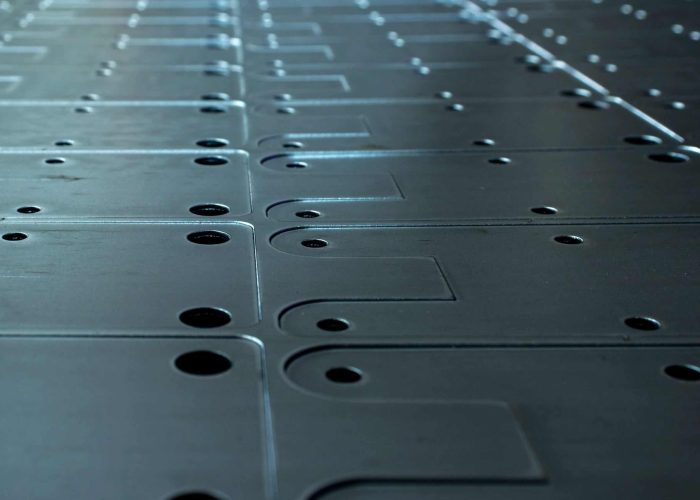
Should you laser cut or punch holes in 16 gauge steel?
For 16 gauge steel (1.5mm thick), punching holes is faster and more economical for simple round holes, while laser cutting works better for complex shapes or tight spacing. The choice depends on hole geometry, production volume, and spacing requirements.
Volume economics: Under 100 parts, laser cutting avoids tooling costs with same-day turnaround. Between 100-500 parts represents break-even. Above 500 parts, punching saves $0.20-0.50 per hole, making it clearly economical for production runs.
Spacing becomes critical when holes are closer than twice their diameter. For example, 6mm holes need minimum 12mm center-to-center spacing or material distorts during punching. When your design conflicts – like needing tight spacing AND high volume – laser cutting becomes necessary despite higher costs. Electronic assemblies often require this compromise.
Quality by application: Clearance holes work perfectly with punched ±0.1mm tolerance. Threaded holes benefit from punching’s cylindrical accuracy, while press-fit bearings need laser cutting’s ±0.05mm precision. Alignment consideration: Punched and laser features can misalign by ±0.2mm, so avoid tight fits between mixed hole types.
Hybrid approach: Combine methods strategically – punch standard rounds, laser cut complex features. Specify “6mm holes – punch” and “slots – laser cut” on drawings. Parts with 20 holes save $8-12 this way.
Design Takeaway: Use punching for standard holes in production volumes, but switch to laser for tight spacing. Design around ±0.2mm alignment variation between hole types.
What is the minimum thickness for bending aluminum without cracking?
The minimum thickness for bending aluminum without cracking is typically 0.5mm for 6061-T6, though this depends on bend radius and aluminum alloy. Thinner materials require larger bend radii to avoid stress concentration that causes cracking along the bend line.
Thickness guidelines by alloy:
- 6061-T6 → 0.5mm minimum (most common)
- 5052-H32 → 0.4mm minimum (more bendable)
- 7075-T6 → 0.8mm minimum (harder, crack-prone)
- 1100-O → 0.3mm minimum (softest aluminum)
The critical relationship involves bend radius – thinner materials need proportionally larger radii. Rule of thumb: Minimum bend radius = material thickness × 2 for soft alloys, × 4 for hard alloys. For example, 0.5mm 6061-T6 needs at least 1mm inside bend radius to avoid cracking. When you ignore these minimums, expect visible hairline cracks that weaken the part and create failure points under load.
Testing your design: Always test bend on scrap material first – if it cracks, increase thickness or radius before committing to production. CAD software bend simulation helps predict problems, but physical testing remains most reliable. Corner radius significantly affects bendability – sharp corners concentrate stress while 0.5mm radius corners distribute loads better.
Material grain direction affects crack resistance significantly. Bending parallel to the rolling direction increases crack risk by 30-40% compared to bending perpendicular to grain. For parts thinner than 0.8mm, consider machining critical edges after bending to maintain clean appearance despite bend distortion.
Design Takeaway: Use 1.0mm thickness as your practical minimum for most aluminum enclosures. When weight savings require thinner material, test thoroughly and increase bend radii proportionally to prevent cracking during production.
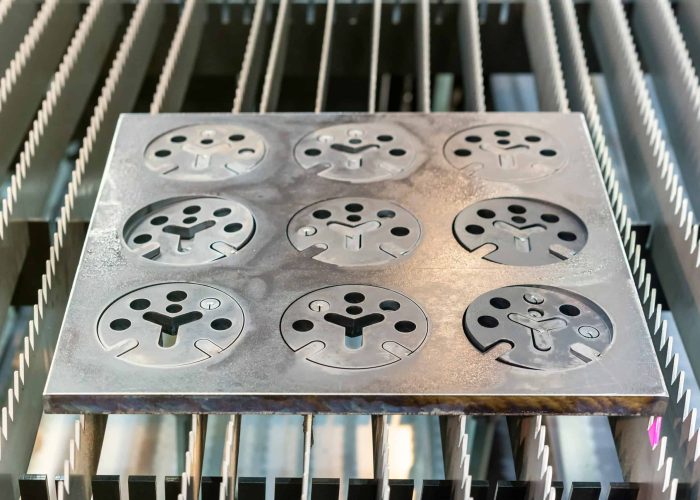
When do you need bend relief on 90-degree corners?
Bend relief is required on 90-degree corners when the bend line intersects another edge within 2-3 times the material thickness. Without relief, the material tears at the corner intersection due to stress concentration during forming.
Relief requirements by material thickness:
- Under 1mm → Relief usually optional for simple bends
- 1-3mm → Relief required when bend meets edge
- Over 3mm → Relief mandatory for all corner intersections
- Stainless steel → Always use relief (harder material)
Relief sizing guidelines: Make relief cuts 1.5× material thickness wide and extend 1× thickness beyond the bend line. For 2mm aluminum, cut a 3mm wide relief extending 2mm past the bend intersection. Visual guide: Relief goes where two cut edges would meet at the bend corner – imagine folding paper and where it would tear without a cut.
When relief cuts affect aesthetics, use alternative approaches: design tabs instead of relief cuts for cleaner appearance, or bend longest edges first and shorter edges last to avoid corner interference. Some parts can be bent without relief and machined afterward – though this adds cost and time. Bend sequence planning often eliminates relief needs entirely by changing which edges get formed first.
Relief positioning matters for both function and appearance. Place cuts on hidden surfaces when possible, or design them as decorative features. Without proper relief, expect material bunching that creates 1-2mm dimensional errors and potential cracking that weakens corner joints.
Design Takeaway: Add bend relief whenever your bend line comes within 3× material thickness of an edge. For cosmetic parts, consider tab connections or strategic bend sequencing to eliminate visible relief cuts while maintaining clean forming.
What tolerances can bending achieve on mounting holes?
Bending can typically achieve ±0.5mm positional tolerance on mounting holes, though this depends on material thickness, bend radius, and hole distance from the bend line. Holes closer than 5× material thickness to bends experience more distortion and looser tolerances.
Holes more than 10× material thickness from bends achieve ±0.2mm accuracy, while holes 5-10× thickness away typically hold ±0.5mm tolerances. When holes fall within 2-5× thickness of the bend, expect ±1.0mm variation, and holes closer than 2× thickness should be avoided entirely or planned for post-bend machining.
The physics of bending stretches material on the outside radius and compresses it on the inside, shifting hole positions predictably. Holes move toward the bend line during forming – a 6mm hole located 10mm from a bend in 2mm aluminum typically shifts 0.3-0.8mm closer to the bend. This movement is consistent and can be compensated for in design.
Design strategies for hole movement: Use slotted holes perpendicular to the bend direction when exact positioning isn’t critical – slots absorb the movement without affecting assembly. For precise hole locations, specify different tolerances on your drawings: ±0.2mm for holes away from bends, ±1.0mm for holes near bends. Some fabricators can pre-offset hole locations to compensate for predictable movement, though this requires testing with your specific geometry.
When holes must be near bends with tight tolerances, plan for post-bend reaming operations ($8-15 per hole) to achieve ±0.1mm accuracy. Critical consideration: Round holes may become slightly oval near bends – use reaming for precision fits or design clearance holes where oval distortion won’t affect function.
Design Takeaway: Keep critical mounting holes at least 10× material thickness away from bends. When holes must be near bends, use slots to absorb movement or specify appropriate tolerances that reflect realistic bending capabilities.

Does welding cause warping in sheet metal brackets?
Yes, welding typically causes 1-3mm of warping in sheet metal brackets due to heat-induced thermal expansion and contraction during the welding process. Thinner materials and longer weld seams create more distortion, while proper fixturing and welding sequence can minimize warpage.
Material thickness significantly affects warpage expectations. Brackets under 1.5mm thickness commonly warp 2-5mm and prove difficult to control, while 1.5-3mm material shows 1-3mm warpage that’s manageable with proper fixturing. Thicker materials over 3mm resist distortion better, typically warping only 0.5-2mm. Stainless steel creates 50% more warpage than carbon steel due to its thermal expansion characteristics.
Weld placement strategy affects distortion significantly. Place welds near the neutral axis (center) of bracket sections to minimize lever-arm effects that amplify warpage. Avoid welding at part extremities where thermal stress creates maximum bending moments. Continuous welds create more warpage than intermittent tack welds spaced every 25-50mm.
Application requirements determine acceptable warpage levels. Electronic enclosures requiring flat mounting surfaces can’t accept 2-3mm warpage without gaskets or shimming, while structural brackets with clearance holes often work fine with 1-2mm distortion. Quality control tip: Check warpage with a straightedge before finishing – powder coating or anodizing hides but doesn’t correct dimensional problems.
Distortion control options: Stress relief heat treatment reduces warpage by 60-80% but costs $50-100 per part and adds 3-5 days lead time. Design alternative: Use mechanical fasteners, tabs, or folded joints instead of welding when dimensional accuracy is critical. Pre-bending parts opposite to expected warpage direction can compensate for thermal distortion with experienced fabricators.
Design Takeaway: Budget 1-3mm warpage into your assembly design with appropriate clearances. Consider bent assemblies with mechanical fasteners when tight dimensional control is essential, or plan for stress relief treatment on precision welded brackets.
What are alternatives to welding sheet metal assemblies?
Mechanical fasteners, tabs and slots, and folded joints offer reliable alternatives to welding that eliminate heat distortion and provide easier assembly and disassembly. These methods work particularly well when you need dimensional accuracy or want parts that can be serviced in the field.
Most engineers don’t realize how much strength these alternatives actually provide:
- Mechanical fasteners → 60-80% of welded strength, removable, $2-8 per connection
- Tab and slot joints → 70-80% of welded strength, permanent assembly, clean appearance
- Folded joints → 50-70% of welded strength, excellent for light-duty applications
- Riveted connections → 85-95% of welded strength, permanent but no heat distortion
The choice often comes down to your application requirements. Electronics enclosures work excellently with tabs since loads are minimal and appearance matters. Structural brackets may need mechanical fasteners with backup washers for safety. Assembly time increases – fastened assemblies take 2-3× longer than welding, but enable field service access.
Sealing considerations matter with mechanical joints since they create potential leak paths unless you add gaskets. Welded joints provide airtight seals for pressure applications, but mechanical alternatives allow disassembly for maintenance.
Design tab connections 2× material thickness width for adequate strength with 0.1mm slot clearance. Pressure vessels and safety-critical components typically still require welded construction for code compliance.
Design Takeaway: Choose alternatives based on strength requirements, serviceability needs, and sealing requirements. Most general fabrications achieve adequate performance with mechanical alternatives while gaining dimensional accuracy and flexibility.
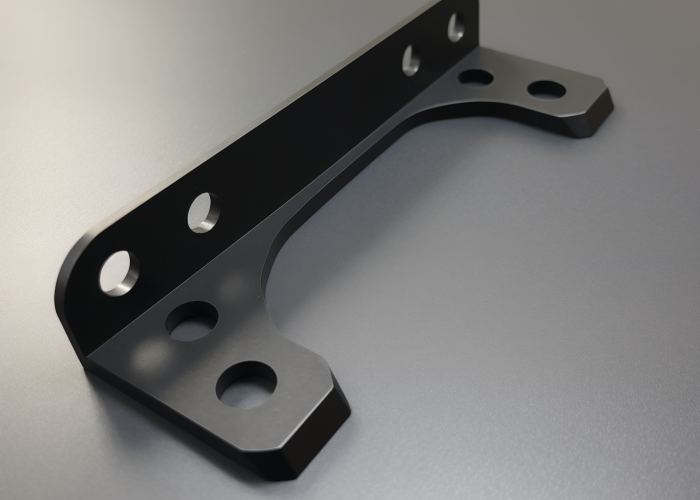
What causes rough edges on laser cut parts?
Rough edges on laser cut parts result from incorrect cutting parameters, material thickness limits, or contaminated assist gas creating inconsistent material removal. Most problems stem from operators pushing machines too fast or using insufficient power for the material thickness.
Common culprits and their solutions include:
- Excessive cutting speed → Reduce speed 20-30%, increases cost $1-3 per linear foot
- Insufficient laser power → Optimize parameters for thickness, may require slower cutting
- Contaminated assist gas → Use high-purity gas, adds $0.50-1.00 per linear foot
- Material surface contamination → Clean before cutting, minimal cost impact
When requesting quotes, specify edge quality clearly. Request “commercial grade” for standard applications or “smooth finish” for critical edges. Cost difference: Smooth finish adds $3-8 per linear foot due to slower parameters and potential secondary operations.
Different materials behave differently during cutting. Stainless steel requires precise oxygen flow, while aluminum needs high-purity nitrogen to prevent oxide formation. Dirty surfaces create inconsistent heating patterns that show as rough zones.
Post-processing options include light deburring ($2-5 per linear foot) for sharp edge removal, or grinding/filing ($8-15 per linear foot) to achieve Ra 1.6 μm finish. Waterjet cutting produces smooth edges directly without secondary operations, though costs 2-3× more initially.
Design Takeaway: Specify edge quality requirements using Ra values in your RFQ. Budget extra cost for smooth edges on critical surfaces, or accept commercial finish for non-critical applications to minimize fabrication costs.
Why do sheet metal parts cost so much to fabricate?
Sheet metal fabrication costs accumulate from setup time, material utilization, secondary operations, and complexity factors that aren’t immediately obvious from part drawings. Understanding these hidden drivers helps you optimize designs and negotiate fair pricing.
Setup time dominates low-volume pricing. Programming CNC equipment and tooling typically requires 2-4 hours regardless of quantity, creating dramatic volume effects:
- Setup time → $100-200 per job regardless of quantity
- Material waste → 20-60% waste on complex shapes vs. 10-20% on rectangles
- Secondary operations → $5-25 per operation (deburring, tapping, finishing)
- Tight tolerances → 50-100% cost premium for specs tighter than ±0.5mm
Ten parts absorb $20-40 setup cost each, while 100 parts reduce this to $2-4 per part. Doubling quantity often reduces per-part cost by 30-50%, explaining why prototypes feel expensive compared to production runs.
Complex shapes with cutouts achieve only 40-60% material efficiency versus 80-90% for simple rectangles. Secondary operations accumulate quickly – each step adds $5-25 per part. Tolerances tighter than ±0.5mm trigger additional inspection procedures.
When evaluating quotes, expect 20-40% price variation between vendors. Reasonable markup runs 2-3× material cost for simple parts, 4-6× for complex assemblies. Red flag: Quotes over 6× material cost for simple parts suggest excessive markup.
Design Takeaway: Optimize designs for standard tooling and efficient material nesting. Specify functional tolerances rather than theoretical ideals, and consider volume breaks when planning production quantities to achieve reasonable per-part pricing.
Conclusion
Choosing the right metal fabrication method requires balancing cost, tolerances, and design requirements. Laser cutting excels for complex shapes, punching for high-volume holes, and bending for structural strength – each with specific limitations. Contact us to explore manufacturing solutions tailored to your sheet metal fabrication requirements.
Frequently Asked Questions
Add bend relief whenever your bend line comes within 3× material thickness of an existing edge. Size relief cuts at 1.5× material thickness wide with rounded ends. For 2mm material, make relief cuts 3mm wide extending 2mm past the bend intersection.
Use standard hole sizes (6mm, 8mm, 10mm) for punching in production volumes, and keep holes at least 2× diameter apart to prevent material distortion. For mixed hole sizes, standardize to 3-4 common diameters rather than optimizing each hole individually to reduce tooling costs.
Reserve ±0.1mm tolerances for critical assembly interfaces and use ±0.5mm for general features. Holes for clearance fits work fine with ±0.5mm, while press-fit components need ±0.1mm precision. Avoid over-specifying – tight tolerances can double fabrication costs unnecessarily.
Design parts as rectangles when possible to achieve 80-90% material utilization versus 40-60% for complex shapes. Align multiple parts on standard sheet sizes (1220×2440mm) and avoid small cutouts that create unusable scrap material between parts.
Design bend radius at 2× material thickness for soft aluminum alloys (6061-T6), or 4× thickness for harder alloys (7075-T6). For 2mm aluminum, specify minimum 4mm inside radius. Tighter radii risk cracking and require annealing or special forming processes that increase cost.
Use tabs for permanent assemblies under 50N load where clean appearance matters. Choose mechanical fasteners for assemblies requiring disassembly, loads over 100N, or when you need consistent alignment across multiple production runs. Tabs cost less initially but fasteners enable field service.
